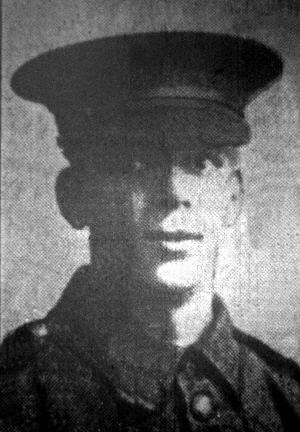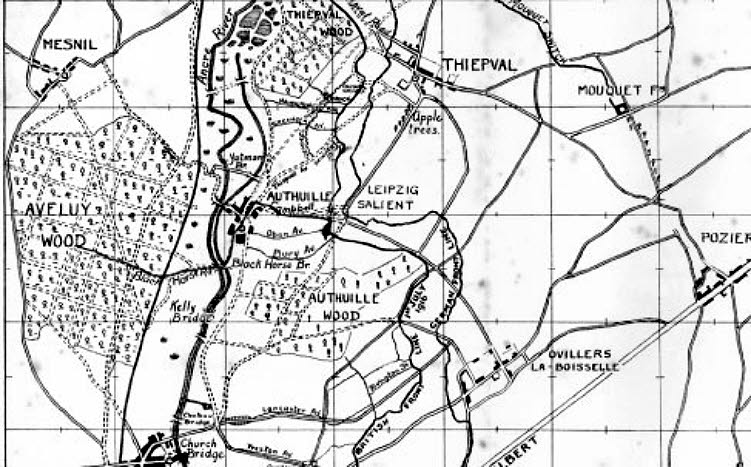
Joe Dixon was born in Wakefield in 1888 and in 1891 he is living at Albion Yard, Wakefield with his parents, David, a grave digger, and his wife Sarah (nee Ramsden) who married in Wakefield in 1886.
In 1901 Joe, aged 13 is a ‘taker-in’ at a glass works and he is living with parents at 9, Albion Yard, Wakefield. The Dixons now have three more children besides Joe.
By 1911 Joe is working as a bottle blower, most probably at the glass bottle factory of John Kilner & Son, Calder Vale Road, Wakefield, and he is now boarding with a family at Eastmoor Road, Wakefield. Joe married Mary Hutchinson in the Wakefield Registration District in 1911 and they had four children: Joe Dixon (b. 1912), Margaret Dixon (b. 1913), Ada Dixon (b. 1914) and Kathleen Dixon (b. 1916). Ada Dixon died in early 1915.
The 1st/4th Battalion of KOYLI was formed in August 1914 at Wakefield and was part of the 3rd West Riding Brigade, West Riding Division. They moved on mobilisation to Doncaster and then in November 1914 to Gainsborough. The battalion moved again to York in February 1915 for training and on the 12th April 1915, they landed at Boulogne. On the 15th May 1915 the formation became 148th Brigade, 49th (West Riding) Division. Joe Dixon enlisted at Wakefield and embarked for France on the 9th of July 1915.
The 1st/4th KOYLI were in trenches near Wieltje, to the north aast of Ypres on the 19th December 1915 when they were subject to a German gas attack with an 80:20 phosgene/chlorine mixture. Many soldiers from the battalion were killed by the poisonous gas, but Joe Dixon survived, writing a note to his wife from a hospital in Norwich:
“I got a dose of the gas the other Sunday morning. It was touch and go with me, but I am now going on nicely.”
In the early hours of the 1st July 1916, Private Joe Dixon with the 1st/4th Battalion KOYLI, as part of 148th Infantry Brigade, moved up to assembly trenches in Aveluy Wood with the objective of assisting the 32nd Division in taking Thiepval village with 36th Division. They had arrived in their trenches in the Eastern part of the wood at 3 a.m. but were not expected to attack until later in the day and consequently they could hear and witness the battle which started at 7.30 a.m.
By 1.30 p.m. on July 1st, a renewed attack was made on the Northern edge of Thiepval, but it did not achieve its aims and X Corps planned a renewed attack at 4 p.m. but orders for this were not received until 3.35 p.m. by those battalions of the West Yorkshire Regiment that were to be involved and so they set off ill-prepared. Orders to cancel the attack failed to arrive and the advance dissolved as the men fell after a few dozen yards.
British aerial reconnaissance claimed British helmets had been seen moving in Thiepval and believing that to be the case another attack was planned from the cemetery in the North of the village. The orders reached 1st/5th Battalion KOYLI at Aveluy Wood at 6 p.m. on July 1st. Along with the 1st/4th KOYLI, the 1st/5th KOYLI immediately went forward with the intention of crossing the River Ancre by the Black Horse Bridge to the south of Authuille. Just after they set off, orders were received cancelling the previous orders, and they returned to Aveluy Wood, but not before taking several casualties from from German shell-fire in the process. It is likely that Joe Dixon was killed in action at this time.
The “Ossett Observer” 1 had this short obituary for Private Dixon:
“Presumed Death of Ossett Missing Man – Private Joe Dixon of the King’s Own Yorkshire Light Infantry, whose home is at 4, Teall’s-yard, off Teall-street, Ossett Common, has been reported missing from his regiment since the British advance on the Somme in July last year, and the military authorities, having made the fullest investigations, have announced that they presume him to be dead.
The soldier, who on his marriage, several years ago, came to reside at Ossett Common, was employed at a Wakefield glass bottle works when he enlisted in February 1915. Going out to the front, he was one of the members of the local regiment who suffered from an enemy gas attack shortly before Christmas, 1915, and for a time he was in a hospital in Nottingham. He leaves a widow and three young children.”
Joe Dixon (28) died on the first day of the Battle of the Somme, 1st July 1916, just like so many others killed on that terrible day of reckoning. His body was never recovered. Private Dixon’s Army Service record has not survived. His MIC records the award of the 1915-15 Star, in addition to the British and Victory medals which were awarded posthumously.

Above: Map showing Aveluy Wood, near Thiepval and the route the 1/4th KOYLI took towards Black Horse bridge, south of Authuille.
Private Joe Dixon is remembered on Pier and Face 11A and 12C at the Thiepval Memorial 2, Somme, France. The Thiepval Memorial can be found on the D73, next to the village of Thiepval, off the main Bapaume to Albert road (D929).
On 1 July 1916, supported by a French attack to the south, thirteen divisions of Commonwealth forces launched an offensive on a line from north of Gommecourt to Maricourt. Despite a preliminary bombardment lasting seven days, the German defences were barely touched and the attack met unexpectedly fierce resistance. Losses were catastrophic and with only minimal advances on the southern flank, the initial attack was a failure. In the following weeks, huge resources of manpower and equipment were deployed in an attempt to exploit the modest successes of the first day. However, the German Army resisted tenaciously and repeated attacks and counter attacks meant a major battle for every village, copse and farmhouse gained. At the end of September, Thiepval was finally captured. The village had been an original objective of 1 July. Attacks north and east continued throughout October and into November in increasingly difficult weather conditions. The Battle of the Somme finally ended on 18 November with the onset of winter.
In the spring of 1917, the German forces fell back to their newly prepared defences, the Hindenburg Line, and there were no further significant engagements in the Somme sector until the Germans mounted their major offensive in March 1918.
The Thiepval Memorial, the Memorial to the Missing of the Somme, bears the names of more than 72,000 officers and men of the United Kingdom and South African forces who died in the Somme sector before 20 March 1918 and have no known grave. Over 90% of those commemorated died between July and November 1916. The memorial also serves as an Anglo-French Battle Memorial in recognition of the joint nature of the 1916 offensive and a small cemetery containing equal numbers of Commonwealth and French graves lies at the foot of the memorial.
References:
1. “Ossett Observer”, 27th April 1917